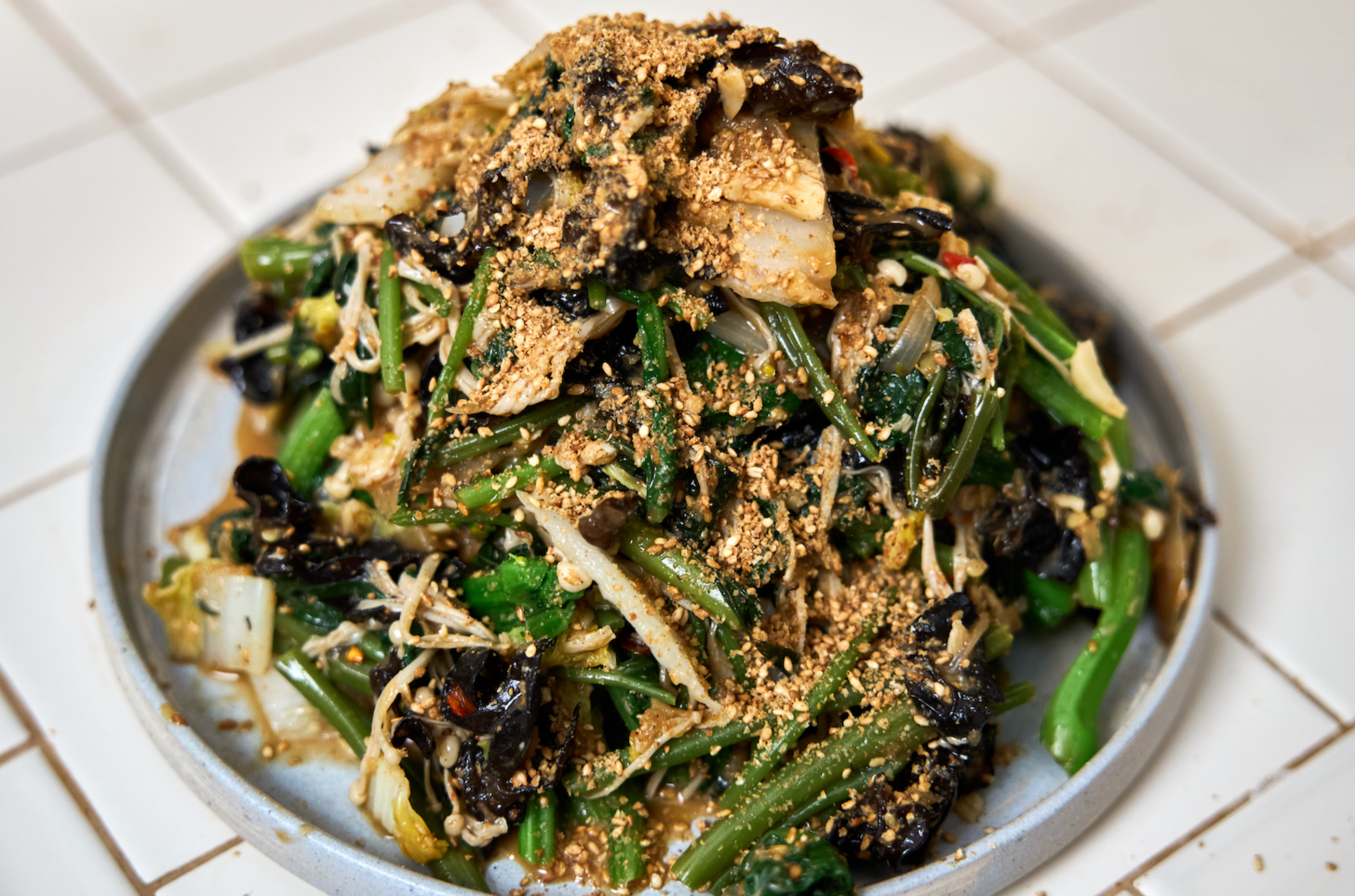The Best Way To Cut A Jackfruit
What Is Jackfruit?
Jackfruit is the largest fruit in the world. In Lao cuisine, jackfruit is commonly used both when it’s young and when it’s ripe. It’s a versatile fruit that works well in both sweet and savory dishes. In recent years, young green unripe jackfruit has become popular in vegetarian cooking because it absorbs flavor well and has a texture similar to pulled pork. In Lao cooking, ripe jackfruit is often featured in desserts like nam wan (sweet coconut milk dessert) or stuffed into sticky rice.
Young jackfruit is great for savory dishes such as vegan tacos, meat alternatives for sandwiches, stir-fries, bbq, and soups.
A Lao dish that uses young jackfruit called gaeng mak mee sai dook moo
Supplies Needed For Cutting A Jackfruit
Jackfruit is a very large fruit that can weigh over 20 pounds. Its outer skin is spiky—similar to durian fruit, though not as sharp thorny peel. To safely cut jackfruit and lessen the messy process, make sure you have the right tools:
A large, sturdy butcher knife to get through the fibrous interior and seeds
Gloves to protect your hands from the sticky white sap (latex)
Cooking oil to rub on your knife and hands, which prevents latex from sticking
A large cutting board, garbage bag, and plenty of counter space
The latex inside jackfruit is extremely sticky, so prep your tools and surface ahead of time.
Step 1: Choose A Ripe Jackfruit
To tell if a jackfruit is ripe, press your thumb gently into the skin—it should give slightly. If it feels firm, it’s still young and better suited for savory cooking. Ripe jackfruit is usually dull green with some black specks. If you're buying for personal use, consider a smaller jackfruit since it yields a lot of fruit and can take time to eat.
Step 2: Wash And Dry The Jackfruit
This step is often overlooked. Since the outer skin has traveled a long way to reach your store, make sure to wash it thoroughly before cutting. Any dirt or bacteria on the outside could transfer inside when sliced. After washing, dry the fruit completely.
Step 3: Cut The Jackfruit In Half
Place the jackfruit on your cutting board and slice it vertically in half. Take one half and cut it into large horizontal chunks, then break those down into smaller, manageable jackfruit pieces for easier handling.
Step 4: Remove The Core And Seeds
The center core of the jackfruit is tough and can be discarded. As you pull apart the fruit, you’ll notice large seeds—save these! They can be boiled and eaten like chestnuts. While working, sticky latex will start to seep out as the fibrous flesh is removed. Don’t worry—it’s not poisonous. Use neutral cooking oil to clean the latex off your hands and knife.
Step 5: Separate The Edible Fruit Pods
Look for the bright yellow fruit pods nestled inside the fibrous strands. Gently pull them out. If any latex has stuck to the pods, rub them lightly with oil, then rinse with water to remove any residue.
Step 6: Trim Away Any Tough Parts
Some parts of the fruit surrounding the pods may still be fibrous or tough. Use a knife to trim these away. Underneath each pod, there may also be a dense base that can be removed.
Step 7: Store
Place the cleaned fruit pods in an airtight container and store them in the fridge for up to a week. If you have more than you can eat, place jackfruit pods in the freezer for 2 to 3 months.
If you can't get access to fresh jackfruit, you can always look for the canned jackfruits although they will not taste as fresh. Those usually come as unripe in a brine or ripened in a syrup liquid.












Sabaidee, I’m Saeng!
I’m a personal chef who specializes in Lao food. Here at Saeng’s Kitchen, you’ll find all your favorite traditional Lao foods and also some new twists to Lao style dishes.